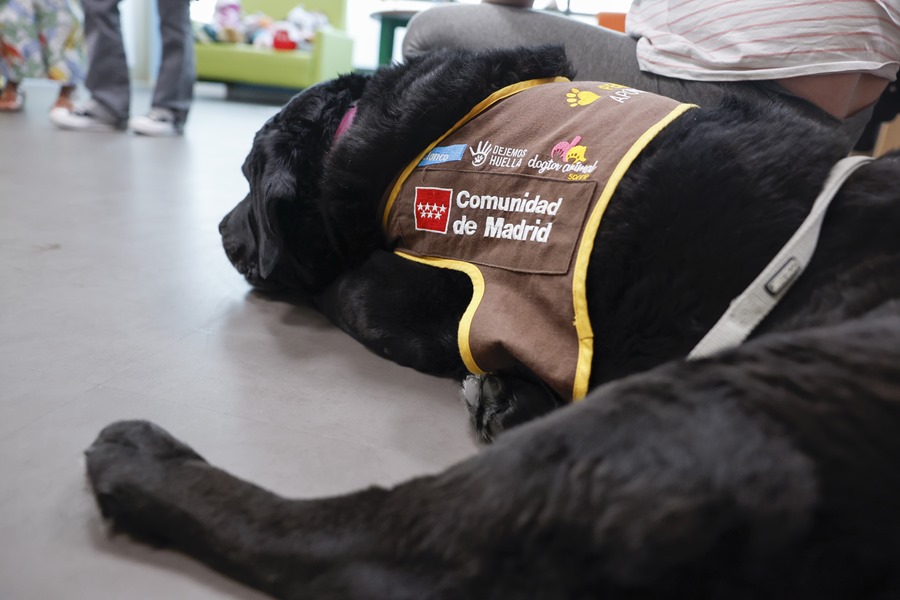Paula Boira Nacher |
Madrid (EFE).- Declaring in court is never easy. Even less for children. Even less if they have to do it against their parents. That is why when the minors cross the door of the Court of Violence against the woman nº1 of Albarracín street in Madrid and they meet Eika everything becomes easier.
Eika is a nine-year-old black Labrador who, within the framework of the “Support Dogs for Minors in Courts” project, accompanies boys and girls who testify as victims or witnesses of crimes during their passage through this hostile space for them.
Since the minor crosses the metal detector located at the entrance of the court, Eika awaits him on the other side along with people like Saskia Van Liempt, from Dogtor Animal, a company that has been working with intervention dogs, psychologists, educators for more than 10 years and trainers who help children with sensory difficulties, neurological problems, social exclusion or victims of gender violence.
“We receive the minors as soon as they come in and we bond for a while, almost always through play so that the child connects with the dog,” says Van Liempt.
The dog guides you through courthouse
Once presented, the minor takes the leash and the dog guides him through the court. “That way they focus a lot of their attention on what the dog is teaching them and they feel calmer,” says the Dogtor Animal worker.

Since the project began in 2014, 528 minors have benefited from it during their forensic interviews in judicial offices for gender violence, family violence and instruction.
This service, however, must be previously requested and authorized by a judge. The child’s family fills out a form that they deliver to the crime victim assistance office (OAVD) where they state that the child likes animals and does not have any allergies, after which the magistrate approves that the dog be present at the preconstituted test.
It is the most important step in the process and allows the minor to only have to testify on a single occasion and with all the guarantees so that the evidence is valid throughout the judicial process.
This statement is made in the Gesell room, made up of two adjoining rooms joined by a two-way mirror.
One of them is bright, with toys and colored furniture, where the minor answers the questions that a psychologist sends him, which have been previously agreed upon by the judge, the prosecutor and the parties, located in the room next to the mirror, invisible to the child.
The presence of the dog facilitates the link with the judicial team
The dog is present next to the child, whose presence and direct contact makes it easier for him to “feel calmer”, establish a greater bond with the judicial team and “can make a better statement”, in the words of Nieves Martínez, one of the psychologists. that interviews the declaring minors.

“The specific function of these dogs is to provide support, especially emotional support, to minors who go through the court,” says Van Liempt, who explains how these dogs “help reduce anxiety” in children before, during, and after to declare.
So much so that there are children who even choose to tell the dog what they have seen and experienced rather than the psychologist. “A dog never judges you, its look is always faithful and calm,” says Eika’s partner, who tells how on one occasion a girl who was unable to convey her statement to the court technicians ended up raising the dog’s ear to reveal to her what happened.
The children are fully aware of what they are telling, why they are telling them and the consequences that their testimony may have since, as Martínez warns, the court technicians must explain it to them.
The reason is that minors have a waiver and can choose not to declare if the defendant is one of their parents and their story can harm them, the psychologist adds.
The demand for the service of support dogs in courts increased by 92% in 2022 compared to 2021 and was used not only to accompany the statements of minors, but also as a family mediator, as a facilitator of the child’s adaptation to the court in the waiting room, as a specific interaction in moments of crisis and even in statements by the minor in the room.
The cases linked to violence accounted for 60% of the interventions of these canos, who also participated in custody reviews or cases of sexual abuse.






